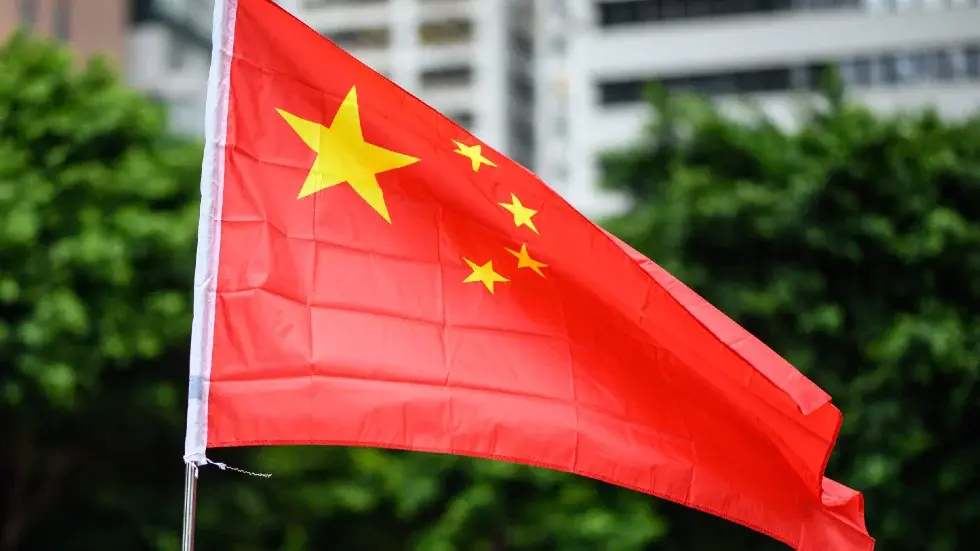

Might as well be. Their goals have not changed. Now they are openly admitting it.


Might as well be. Their goals have not changed. Now they are openly admitting it.


Leftists have this really weird tendency sometimes of accusing some of their best allies of being secret feds or cryptofascists. I understand where this paranoia comes from but it’s not healthy and it’s not helpful.

I have no experience with game development so i can’t speak on what that takes, but the difficulty of modding very much depends on the game. Paradox games for instance are generally extremely easy to mod, pretty much anyone can learn to do it, though the skill ceiling can be quite high depending on how deep you want to get into more complicated scripting and/or 3D modeling new assets.
Whether or not these skills translate to making your own game i don’t know. But if you are interested in giving that a try that i think the place to start is perhaps a tutorial for one of the more commonly used engines like Unity.


They are not a threat. At most they are a mild nuisance. Like Trotskyists, their main function is as a tool for preventing the formation of real and effective revolutionary movements.


And that’s just one of several medical science breakthroughs China has made in the past two months:

-Type-2 Diabetes For the first time in the world, Chinese doctors successfully treated an end-stage type 2 diabetic patient by implanting islet tissue derived in vitro from his own endoderm stem cells. The patient has been insulin-independent for 33 months. The study was published in the journal Cell Discovery.
-Asthma A Chinese team developed a promising therapy to put brakes on asthma via genetically engineered CAR-T immune cells, which has been proven to induce durable remission of asthma in mice after a single injection, potentially offering a one-time treatment for the disease. The study was published in the journal Nature Immunology.
-Congenital Hearing Loss Chinese scientists have successfully restored bilateral hearing functions and speech perception of five children with born hearing loss after injecting vector genomes into both of their ears, proving bilateral gene therapy is safe and effective in treating congenital hearing impairment. The study was published in the journal Nature Medicine.
-Tumor Chinese researchers have unveiled a nanomaterial capable of inhibiting tumor growth by over 80%, heralding promising advancements in cancer therapy and the management of associated diseases. The study was published in the journal Advanced Materials.
-Telesurgery A Chinese team has conducted the world’s first transcontinental live telesurgery in Rome, Italy, using a self-developed system to treat a prostate cancer patient 8,100 km away in Beijing, China, marking the longest-distance remote robotic surgery on humans to date.


I usually try to keep file sizes of uploads under 1MB and then i have no issues.


There was a post recently also about how Pamphlets was being cringe and was saying some really weird things. I take the same view on them as i do on Redstream: yes they have some bad takes every now and then, and no they are not completely aligned with our views, but they are nonetheless useful as a source of agitprop content. We can take what’s good and discard/criticize the bad.


I think you’re exactly right, this is the proper dialectical way of viewing things, as a process.
the question is which will be the big qualitative leap
I would argue that February 2022 was that qualitative leap. But maybe i’m too optimistic, idk.


Everything you say is correct. I’m just looking at this from a more global perspective.
I don’t think it’s all that relevant how the people in the imperial core viewed those events, but all across the global south 2016 and 2020 were undoubtedly perceived as major indicators of the decline/dysfunction of western “liberal democracies”.
I do think much of their illusion, or their myth or whatever you want to call it, was shattered then. They were mask-off moments. But as i said, i don’t necessarily view those as true inflection points, rather just as further data points indicating a world in transition.
Nominal yes, PPP no. Comparing nominal GDP doesn’t mean much because it’s an apples to oranges comparison. It only matters for foreign trade. And China’s economy is actually bigger than official stats suggest: https://lemmygrad.ml/post/4853219


Here’s some further reading for you on this topic: https://www.marxists.org/reference/archive/strong-anna-louise/1959/tibet/index.htm
It’s a book written by an American journalist who visited Tibet just as it was in the process of abolishing serfdom, and got to witness it in person and talk to the people there who told their stories about what life was like before.
Highly, highly recommend every communist to read this at least once.


This is true and is almost never mentioned. Much of “China’s pollution” is actually the West’s outsourced pollution.
China has a population of 1.4 billion, that’s quite a long way away from 2 billion. Still, your point remains valid. China has double the population of the US and EU combined but around the same CO2 output as US+EU.
Unfortunately this is not the case. China remains the country with the largest carbon footprint in absolute terms, though it also has one of the fastest growing green energy sectors, is the largest producer of solar panels by far, and is electrifying at a crazy pace.
Another thing that is frequently overlooked or purposely omitted are historically cumulative emissions, and in this case China doesn’t even come close to the total CO2 output of the US from 1900 to today. And it only takes maybe three or four major European countries combined to overtake China in this regard.


Wow, great work! That’s pretty much what i intuitively expected was the case when i looked a bit into how they were representing the data in their graph and what the World Bank source actually says.
I also went ahead and tried to see what changes if you use a higher poverty line, like something around $5 for instance, and it turns out that in this case we may actually have an increase in total number of people in poverty if you exclude China. Whichever metric you use, it is indisputable that China has done something no one else in the world has managed to do.


Well, they are “state capitalist”. What ultras don’t understand is that “state capitalism” under the dictatorship of the proletariat is just another way of saying socialism. Lenin actually talked about this.


I think we’re already there. Multipolarity doesn’t necessarily mean total cutoff from all dependencies (after all, the US is dependent on China in a lot more ways than vice versa), or that the US empire is completely defeated yet. It just means that they are no longer the only game in town, it means that countries have alternatives and the West is no longer able to completely dominate the rest and tell them what to do. It means that the West have lost their monopoly on technological advancement, on financial systems, on use of military force, their undisputed control over the global narrative, etc. In short, they are no longer global hegemons now that alternative centers of power have emerged.
What i am not yet sure about is when exactly this transition occured. One could argue it started as far back as 2008 with the global crisis of capitalism which China had to bail the West out of…or was it perhaps in 2013 when China launched its Belt and Road Initiative megaproject for economic integration outside of Western dominated institutions?
Was it maybe in 2014/2015 when Russia dared to defy the US by foiling their plans for Crimea and Syria, or in 2016 when it became suddenly clear that much of America and parts of Europe were no longer buying the liberal establishment’s bullshit…or was it in 2020 with Covid which exposed western governments as morally bankrupt and woefully incompetent compared to China’s?
Personally i don’t know that i could pinpoint exactly when the transition started but i do know that Russia’s intervention in Ukraine in 2022 was a watershed moment, and their subsequent weathering of the storm of the entire collective West’s economic and diplomatic onslaught showed that we were now clearly living in a new world. One in which it is now possible to stand up to the collective West’s bullying, to defy their tyrannical “rules based order” and not only survive but win and thrive. And the global south noticed this, hence all of the other sudden big events we have seen take place around the world since then:
France getting kicked out of West Africa, the Palestinian resistance entering into a qualitatively new phase of struggle, rapid expansion of BRICS, reconciliation between Iran and Saudi Arabia, the Yemeni blockade of the Red Sea, Iran striking a direct blow to the Zionist entity, Russia breaking the western sanctions regime on the DPRK, China becoming bolder in defending its own interests and no longer mincing words when it comes to the US’s belligerent actions directed at them, the list goes on. None of this could have happened under US unipolarity.


That post is extremely unserious. They have one dubiously sourced graph and a couple of numbers thrown in with zero explanation of how they arrived at them. It’s about the same level of effort as your average Reddit post.
I mean they don’t even bother to define what they mean by “extreme poverty” whereas the paper that i linked does. Of course if you play definition games you can adjust the poverty line until your data says what you want it to say. They’re also talking about percentages of population in poverty rather than absolute numbers.
You can go to the website of the World Bank yourself where they claim to have gotten their data from (though they never specify exactly which World Bank data set they used) and look at the charts, what they are depicting, whether they specify total numbers of people in poverty or percentage poverty rates, and how they change depending on where you set the poverty line:
https://pip.worldbank.org/home
For instance if you use a slightly higher cutoff line then suddenly the story becomes even worse without China, and the global number of people in poverty actually becomes higher rather than lower while the rates barely decline. On every chart you see one striking feature: the sharpest decline occurs in the East Asia Pacific region, most of that is of course China.
If raw population size were the only thing explaining why China has such a big impact on the statistics you would expect to see similar effects coming from India, but you don’t. And this is all assuming that the World Bank is an objective and neutral source of data whose pro-capitalist ideological bias doesn’t affect how they measure and define certain things.
Also, another thing to consider: a problem with just looking at the poverty rate decline is that you can have a “global poverty reduction” simply by population growth in the developed world. What you’d really need to do is exclude China and the developed countries.


“Moreover, over the same period (2021-2024), the wealth of U.S. billionaires INCREASED by 26%, from $4.5 trillion to $5.7 trillion.”


When they should be sitting in an actual shark tank.


Damn, i just posted this too and now i see you beat me to it by several hours. You want me to take my post down so we don’t have a double post situation?
My name is Inigo Montoya